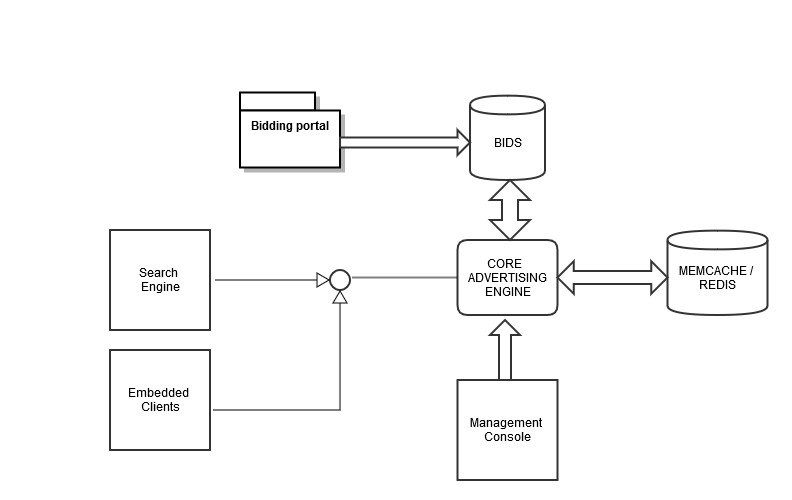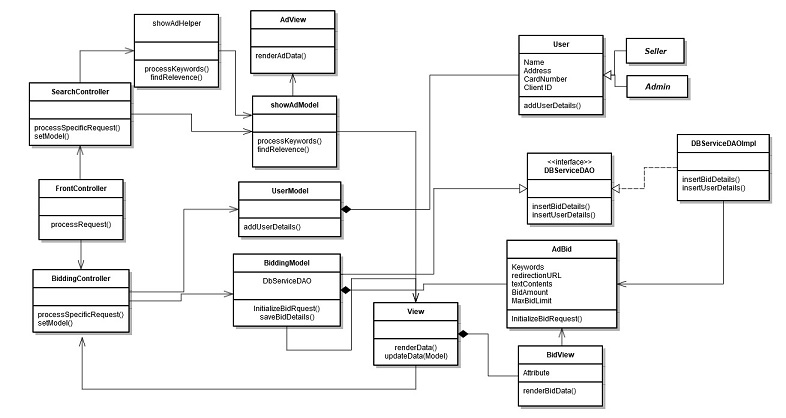Chris Pollett > Students > Umaranikar
Print View
[Bio]
[Blog]
[Google as an ad space seller - PDF ]
[Credibility of rating on Amazon - PDF]
[Study of Google's advertising services]
[configuring Ad Server- Yioop patch]
[Designing of online auction system]
[Prototype - Find relevant ads for the search query]
[Online Auction System in Yioop]
[How System Calculates Min Bid?]
[How System Updates Bid Amount?]
[Display Relevant Advertisements]
Designing online auction system
The aim of this deliverable is to design online auctioning system where advertisers can create campaigns for their products.Advertisers will provide information about keywords association, bid amount, and description of the advertisement along with actual campaign. This information would help in retrieving content based advertisement based on user's query. This auctioning system is nothing but an ad server where you create advertiser's ad with targeting criteria. The server will handle ad serving, ad tracking, and real-time reporting on ad impressions, clicks, and revenue.Ad server will manage ad inventory with user-friendly interface.

Figure shows high level architecture of online auctioning system. Users can create their campaign using web based bidding portal. Ads created by user will be added to BIDS database. When user searches for a particular query, core advertising engine processes ads from database based on certain parameters like keywords, ad description. Advertising engine then would respond with list of most relevant ads from existing database. Sophisticated algorithms are used to find most relevant ads. Along with traditional database we can have in memory database like redis to minimize response time. The system will also have management console which helps to change the rules of bidding, and relevancy at run time.

Figure shows class diagram of online auctioning system. Auctioning system is designed to work with Yioop. Front controller accepts user request and if it is an auction request, it forwards request to BiddingController. Controller invokes model based on request. Controller acts as a listener both to model and view to receive events. Controller is responsible for keeping model and view in sync. Suppose, BiddingController receives change in event from BidView, then it routes appropriate changes to BiddingModel. The advantage of it is view does not need to know about the model. DBServiceDAO responsible for handling database request and respond with appropriate list of results.